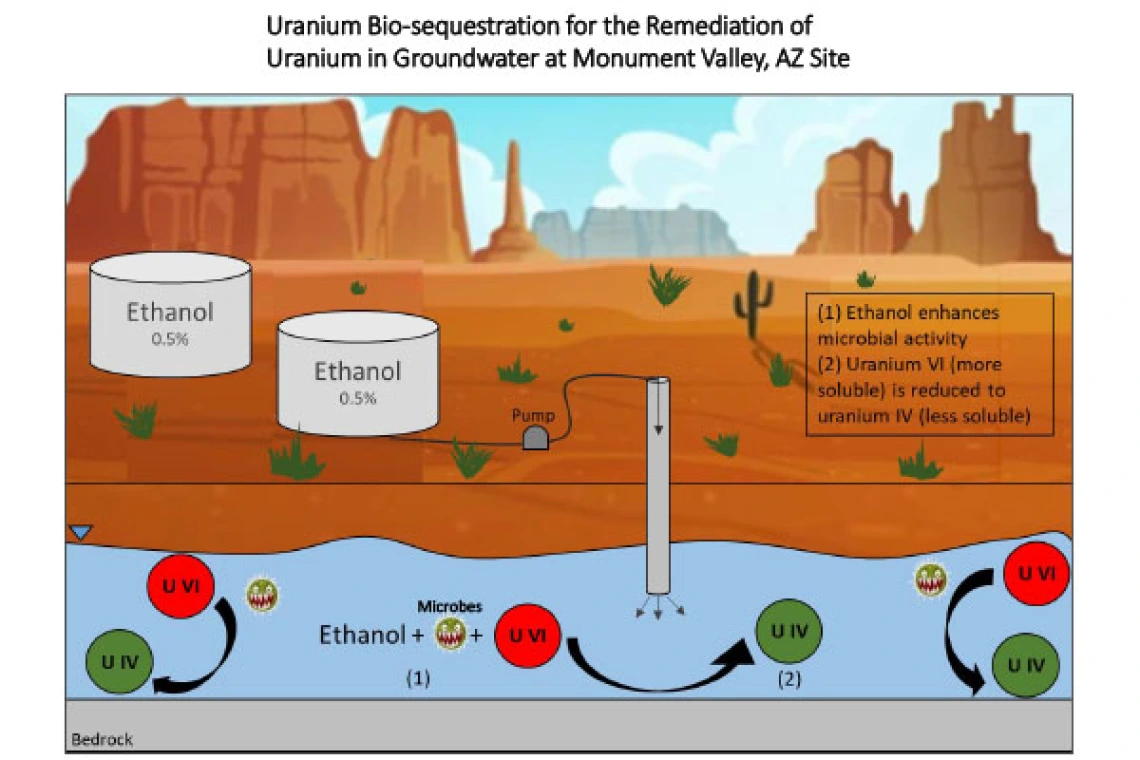Asma El Ouni
Mentor
Dr. Mark Brusseau
Department
Environmental Science
Abstract
Pilot Study for In Situ Biosequestration for the Remediation of Uranium in Alluvial Groundwater at the Monument Valley, Arizona, UMTRCA Site: Bench-Scale Experiments and Mathematical Modeling
Groundwater remediation of closed or abandoned uranium mine sites is often costly and complex, especially in arid environments like Arizona. In-Situ Treatment is one of the few remediation strategies for deep groundwater. In-situ uranium biosequestration consists of adding an electron donor to enhance microbial activity which ultimately immobilizes uranium in the sediments by reducing highly soluble U (VI) to less soluble U (IV).
The aim of this study is to assess the efficacy of in-situ biosequestration for the treatment of uranium-contaminated groundwater at the Monument Valley, Arizona, Uranium Mill Tailings Radiation Control Act (UMTRCA) site and to develop a mathematical model. The latter helps determine the main reaction network that controls the biosequestration of uranium and other co-contaminants and simulates the results of column experiments.
The pilot test was conducted in the former ore-processing area of the site, where there is a small plume of elevated uranium concentrations in the groundwater. The laboratory experiments were conducted using groundwater and alluvial sediment collected from the site. The efficacy of in situ biosequestration was evaluated in laboratory experiments, using four different electron donors; acetate, benzoate, ethanol, and glucose. Results indicate that ethanol performed best in sequestering uranium in the sediments and in stimulating microbial reduction of nitrate and sulfate. Uranium concentrations in solution decreased significantly during and after the acclimation phase from approximately 400 to 1 microgram per liter (μg/L), which is significantly below the regulatory standard of 44 μg/L established by UMTRCA. Mass-balance calculations showed that approximately 76% of uranium input was sequestered. However, Uranium concentrations rebounded upon the introduction of oxygenated water with no electron donor.
The results of the pilot tests indicate that ethanol injection successfully stimulated microbial activity and decreased groundwater concentrations of uranium at the site. Yet, sustainable application of this biosequestration approach would likely require periodic electron-donor injections to maintain reducing conditions and associated sequestration effects. Simulation results from the mathematical model exhibited a great match to the experimental data and confirmed the biosequestration and re-oxidation of uranium.



